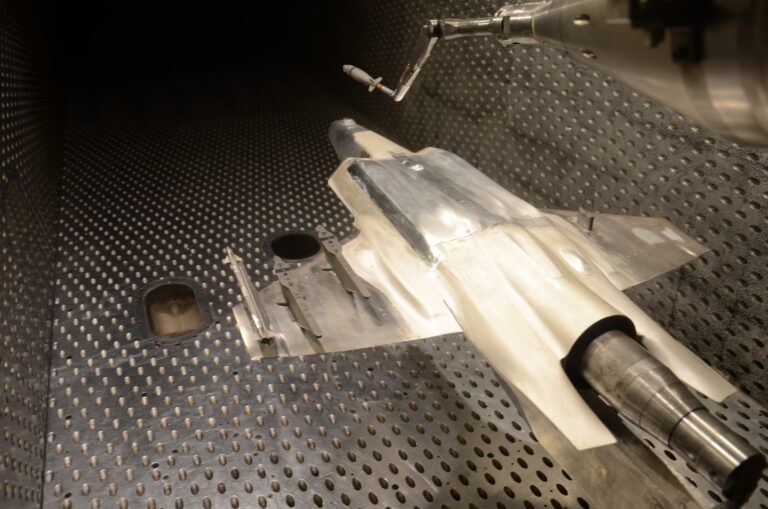Store separation testing on a one-fifteenth scale model of an F-35 Lightning II Joint Strike Fighter in the Arnold Engineering Development Complex 4-foot transonic wind tunnel, or 4T, at Arnold Air Force Base was completed weeks ahead of a scheduled facility maintenance outage, saving the test customer more than US$1 million.
According to Jimmy Williams, an Air Force project manager for the test, the test was successful.
“Captive loads and aerodynamic store separation testing was conducted and provided important data to the Joint Program Office, Air Force Seek Eagle Office and Naval Air Systems Command to better define the release envelope of a critical store from the F-35 Joint Strike Fighter,” he said.
In addition to fulfilling the test requirements ahead of the original test schedule, the independent drive system (IDS) within the AEDC Propulsion Wind Tunnel Facility at Arnold AFB was returned to service in time for the test, providing a substantial cost savings over the Plenum Evacuation System (PES) mode that would have otherwise been used to create test conditions at 4T.
The IDS mode is preferred when running Mach numbers below 1.3 to maximize efficiency and cost effectiveness, while the PES is primarily used for testing above Mach 1.3. The PES can also run Mach numbers below 1.3, but it is the more expensive of the two systems to run because of increased use of equipment, utilities and labor.
The types of stores tested on the model were guided bombs known as the GBU-54/38 Laser Joint Direct Attack Munition (JDAM) and air intercept missiles AIM-120 and AIM9-X.
The first phase of the test was aerodynamic effects, or Carriage Loads, with the stores attached to one or both wing station, and internal weapons bay stations positioned to capture the impact of the carried stores on the F-35 Stability and Control. The test model was pitched to the proper attitudes automatically by the AEDC-developed computer controlled Automated Model Positioning System.
The second phase of the test involved free stream testing and store separation, which is conducted at 4T using the Captive Trajectory and Grid Survey.
“Our goal was to collect aerodynamic data used to determine characteristics of the GBU-54/38 Laser JDAM metric store for all three variants of the F-35,” Williams said.
The F-35 variants include the F-35A conventional takeoff and landing variant, the F-35B short takeoff/vertical landing variant and the F-35C carrier variant, which is used by the U.S. Navy.





